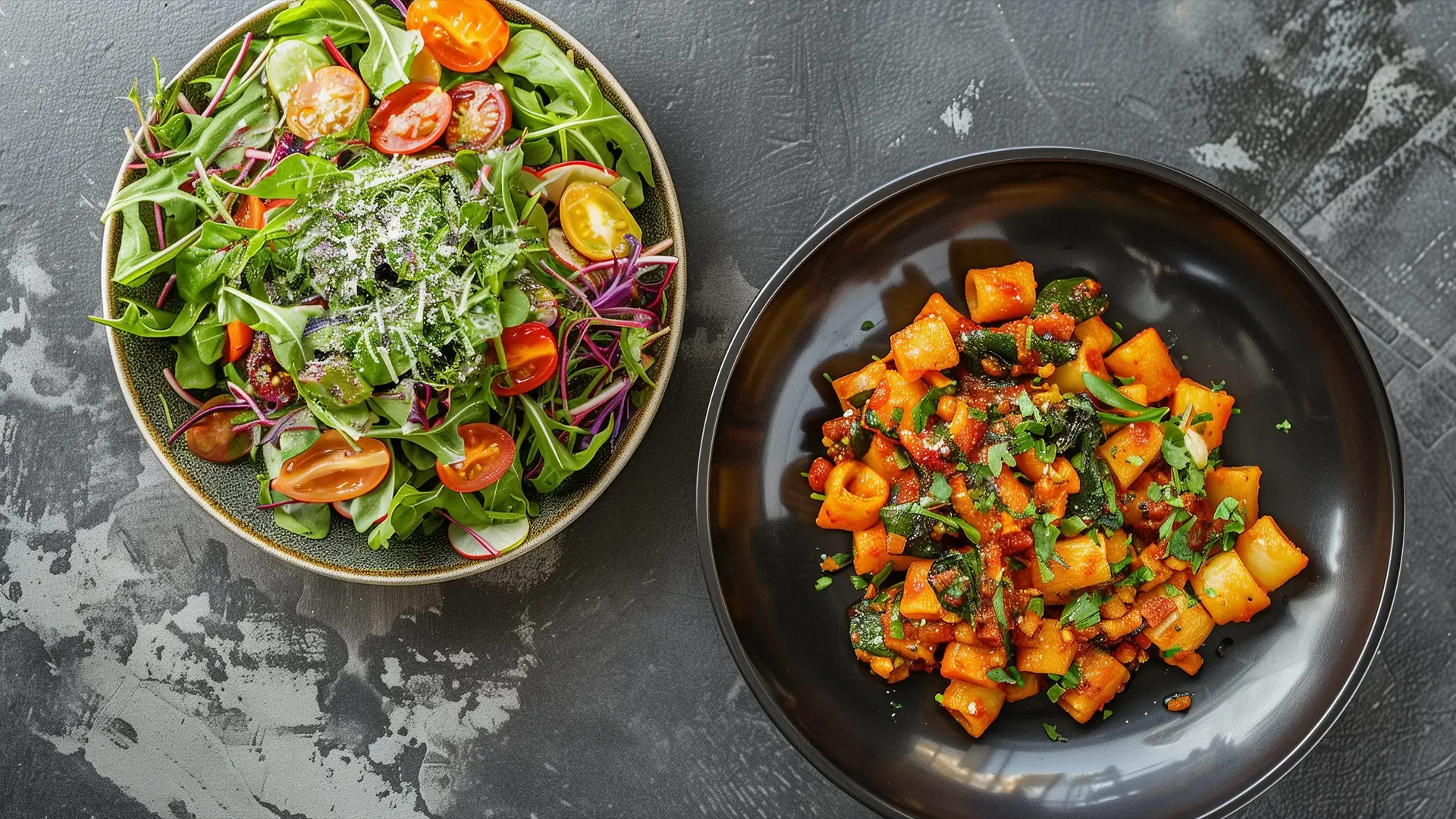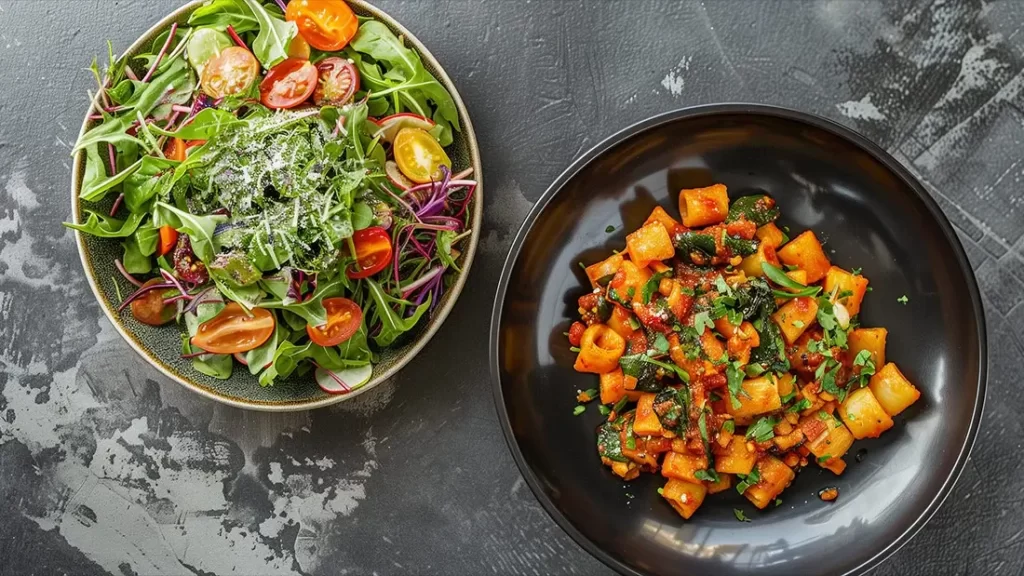
17.07.2024, from Fabio Arcuccifounder of Health Journey
With fiber against diabetes 2: How to turn your meal into medicine
Feast healthily: The surprisingly simple way to stable blood sugar
In this article
- Introduction
- What happens in your body?
- The rollercoaster ride of your blood sugar
- The trick with the salad
- KNOWLEDGE: From adult-onset diabetes to type 2 diabetes
- Your gut microbiome is happy
- TIP: Your personal blood sugar detective
- Step by step to less age-related sugar
- The extra boost for your gut
- Conclusion: Your path to a healthier life
- Other articles that might interest you
- The most interesting studies on the article
But wait! Could it be that this seemingly harmless combination does more to your body than you think? You might be asking yourself: "What's wrong with pasta with vegetable sauce? It's not junk food!"
You're right, it's not junk food. And yet, depending on how you eat it, this meal can either do your body harm or do it real good. The decisive difference lies in not only in the ingredients, but also in the order in which you eat them.
Let's go on an exciting journey together - a journey through your body. We'll find out what really happens when you eat your beloved pasta and how you can not only avoid cravings with a simple trick, but also actively do something about the dreaded type 2 diabetes. The best thing about it? You don't have to give up your favorite foods. You just have to combine them cleverly.
Are you ready to unravel the mystery? Then buckle up. We're off to the Discovery tour through your body!
What happens in your body?
Imagine you are a tiny piece of pasta. Your journey begins in your mouth. Here you are broken down by your teeth and mixed with saliva. The saliva contains an enzyme called amylase, which is already starting to break down the complex carbohydrates into smaller units.
Now it's down the slide into the stomach. This is where things get turbulent! Gastric juices envelop you, but carbohydrate digestion pauses for the most part, as the stomach acid inactivates the amylase.
After just 15-30 minutes, the stomach begins to transport you in small portions into the small intestine. This is where the main work begins: the pancreas releases more amylase into the small intestine and the intestinal wall also produces its own enzymes. Together they break down the carbohydrates into their smallest components: glucose, fructose and galactose.
The glucose - the main component of the pasta - is now quickly absorbed into your bloodstream via the intestinal wall. And this is where the rollercoaster ride begins...
Are you ready to find out what happens next in your body?
